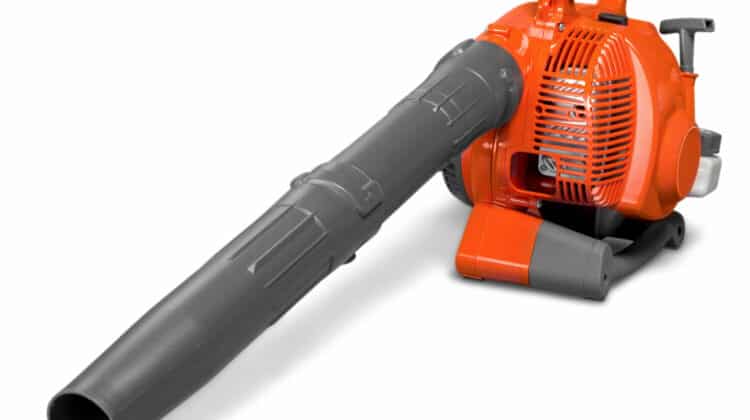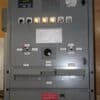
If you think of yourself as an intelligent and well-informed homeowner who is up to date with the latest household tool, then you know that the cheapest is not necessarily the best, the same thing with leaf blowers. You want to make sure that you want to get the best one available, and money is no object.
The most effective leaf blower has a powerful machine that can do the job of cleaning your yard of leaves in less time as possible. As an experienced shopper and homeowner, the crucial information to know on how to get the most awesome blowing machine is the CFM (referring airflow, horsepower, and weight) and the MPH (referring to the quickness).
You might be thinking, how does this relate to you and your incoming purchase of this labor-saving piece of machinery? These ratings will inform you about the range of blowing power that a great blower has, which in turn will provide you with a fantastic basis for picking the one that is compatible with you and your home.
So look out for these numerical details when shopping for a leaf blower.
How Does CFM Relate to Leaf Blowers?
Perhaps this is the first time you have heard about CFM, which is understandable. It is not a familiar type of calculation.
It refers to cubic feet per minute and is the calculation of volume. Concerning the blowing machine, it refers to the quantity of air that goes through the projecting spout or nozzle of a leaf blower in one minute.
Since it measures air quantity, it is a beneficial way of understanding and knowing how much leave you can displace with the blowing tool. Another is how big a place you can clean in a particular period.
If the measurement of the CFM is higher, the more air-blowing power it produces. Once you know this, you can clear out a wide and dirty scene in the shortest possible time.
Table of Contents
How Does MPH Relate to It?
If the term CFM might be unfamiliar, MPH is a measurement that anyone that has ridden or owns a car is familiar with.
It refers to miles per hour, which calculates the fastness in your blowing equipment. Specifically, its airflow rate when air goes through the spout.
This kind of calculation is incredibly helpful in knowing the forceful nature of your blower and how fast it can blasts debris away from you.
If you crank it up to a higher rating, the faster and more forceful it is to impel the leaves away from you.
For a larger blower engine, it would be stronger. Both values will also be higher.
The impeller is a propeller-like piece of the engine that emits the spouting flow of the leaf blower. The MPH and the CFM depend on the rotation angle, the quickness, and the length of the fan blades of the impeller.
If the blade has an angle with a much higher degree, more quantity of airflow is created and produced.
Tips that Come Out from Both Ratings
In a brand-new leaf blower, you will get to know that there is a discrepancy in the values of each of the ratings from what the equipment salesperson or the manufacturer will tell you. It is for this reason that the blower’s maker asses both calculations starting from the end of the spout. Yet the stuff that you are blasting away is found a short distance away from the sprout’s tip. Because of this, the stuff would not be properly blown off at a speed of 250 MPH.
There are specifications that the blowing machine adheres to, which will influence its effectiveness:
- For gas-powered blowers, the horsepower, the weight, the fuel capacity, and the movement of the engine in the CC unit are the specs to take note of.
- For cordless ones, the specs to watch out for are the voltage in battery amps and the weight.
The Appropriate CFM for Your Blower
Since you already are a smart shopper that knows a lot about household accessories, you may have some knowledge about the best CFM range for the blower. Or if MPH is more significant than CFM and vice versa.
IF you want to measure the total power of the blower’s airflow, you need to calculate the values of both MPH and CFM. It will allow you to know how many leaves you can blow off in the fastest allowable time.
You will know the blower’s strength by combining the ratings of both CFM and MPH. If a particular blowing device has a higher rating for both, then it has a stronger airflow capability.
Each rating affects and relates to the other. If one increases or decreases, the other one should do the same and will affect the airflow power.
An Analogy to Get a Better Know-How
Think of a liquid flowing through a pipe with a large hole versus the same liquid going through a thin drinking straw. The liquid coming out of the pipe will have a heavy and thicker current, and would not spray as far. While with the thin straw, the same liquid would burst out in a strong stream, which would spout farther.
For a blower with a higher CFM level, you can clear out a large pile of debris in your yard but do not blast the debris as far.
For a blower machine with a higher MPH rating, you can blast the debris far away, but the pile would be tinier.
As an avid yard-cleaner, you should consider both ratings so that you can clean your yard in the quickest time. Then you can finally enjoy the chore at hand.





